Homeschool Writing Program
See sample lessons from Write On - the homeschool writing program kids love.

Students start with words and sentences, learn paragraphs and essays, and finish with writing a thesis.
In between the structured lessons, creative Write On's keep them interested in finding new ways to express their ideas.
Write On #1
We start with single words - in this case adjectives (but we don't have to call them that yet!) Students develop a list of descriptive words and write them so the letters match their description.
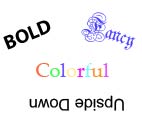
What's On The Page?
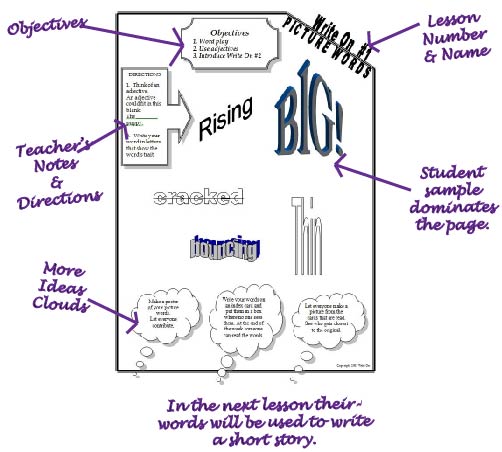
Write On #5: Riddles
Two types of sentences are used in riddles: statements and questions. Students have fun writing their own sentences to give clues for their riddles.
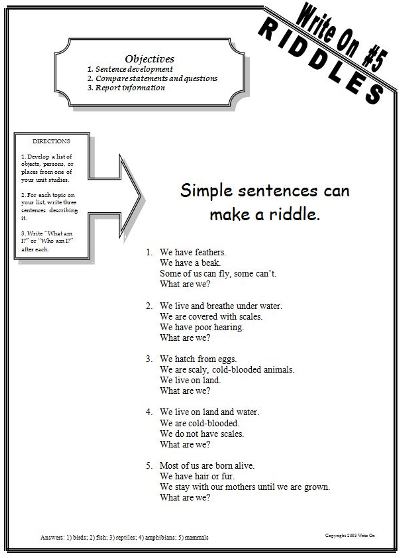
Every 5th Lesson is Academic
The lessons divisible by five (5, 10, 15, 20, 25, 30 etc.) are academic lessons.In this lesson, students write complete sentences to give clues. But they are grouping their sentences by subject matter - getting ready for paragraph development in a totally painless way.
Between the academic lessons are the creative writing exercises which stretch their writing skills and creative use of words. Together, the creative and academic lessons make them better writers with multiple ways of expressing themselves.
Write On #15 and 16: Paragraph Development
Paragraph development starts in earnest in lesson fifteen. But students are so busy focusing on an easy and fun topic: animals!
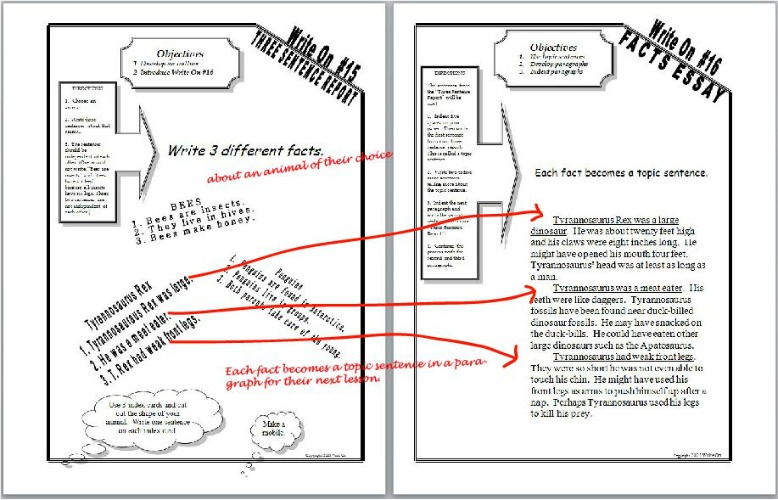
Write On #21: Looking for the 5 W's
The academic lessons continue to show new ways to develop paragraphs and share facts with readers. In Write On #21 they learn to expound the "who" "why" "what" "when" "where" about an event of their choice.
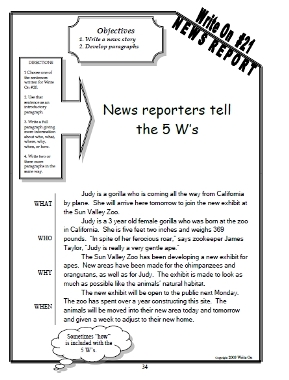
Creative Writing
Between the academic lessons, creative writing exercises are introduced which give your budding writer practice stretching their writing skills.
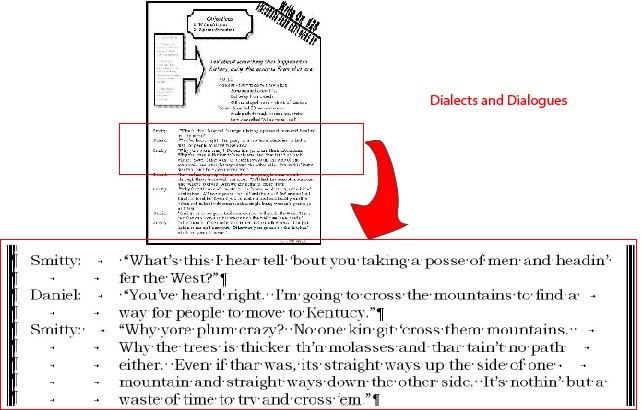
Persuasive Writing
The first steps in persuasive writing begin in Write On #40. Students brainstorm a list of advantages of an action of their choice.
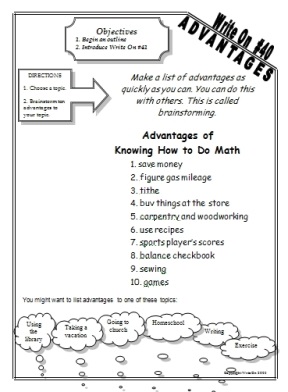
See how other students used Write On #41 to develop their Persuasive Writing Essays in our writing contest.
Word Usuage
"The difference between the almost right word and the right word is really a large matter--it's the difference between the lightning bug and the lightning."
Mark Twain
As Twain's brilliant quote suggests, finding the right word or phrase clinch's the writers ability to communicate.
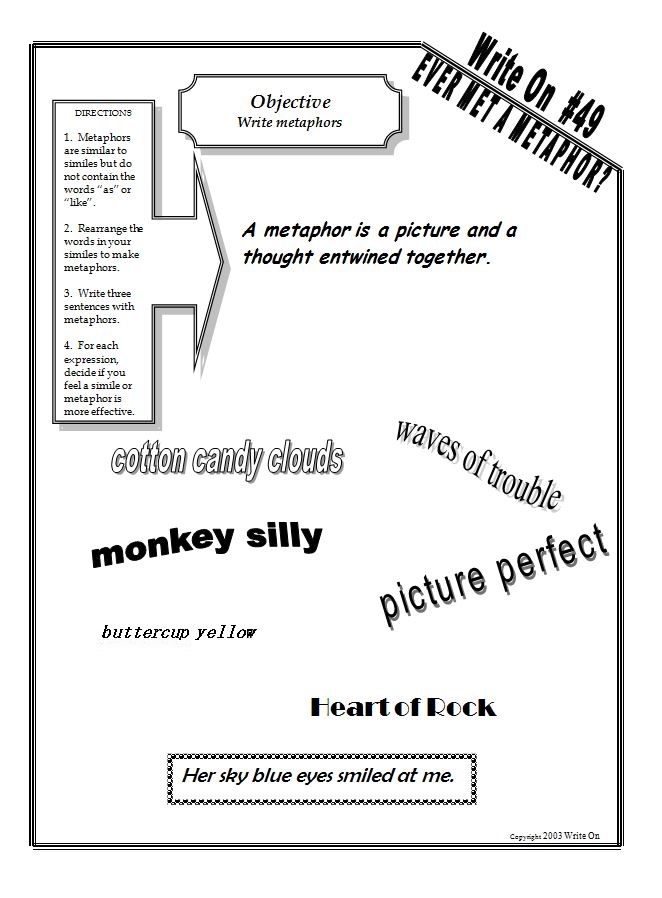
- Metaphors
- Similes
- Onomatopoeia
- Picture Words
- Sarcasm in Writing
- Mood and Tone
- Alliteration
Character Development
Several writing exercises assist students in character development. The first is writing a character sketch. With each paragraph, they have to give specific examples of how a real person exhibited a particularly character trait.
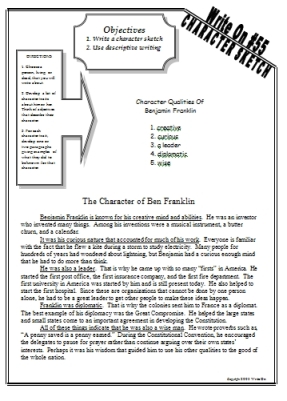
But it doesn't stop there. Later the student has create their own fictitious character and write action and dialogue that demonstrates his or her character traits. The trick is - they aren't allowed to name the character traits they have to show them.
Poetry
Writing wouldn't be complete without poems, would it?Even students who hate poetry have had some light-hearted fun with our Write On's that teach poetry.
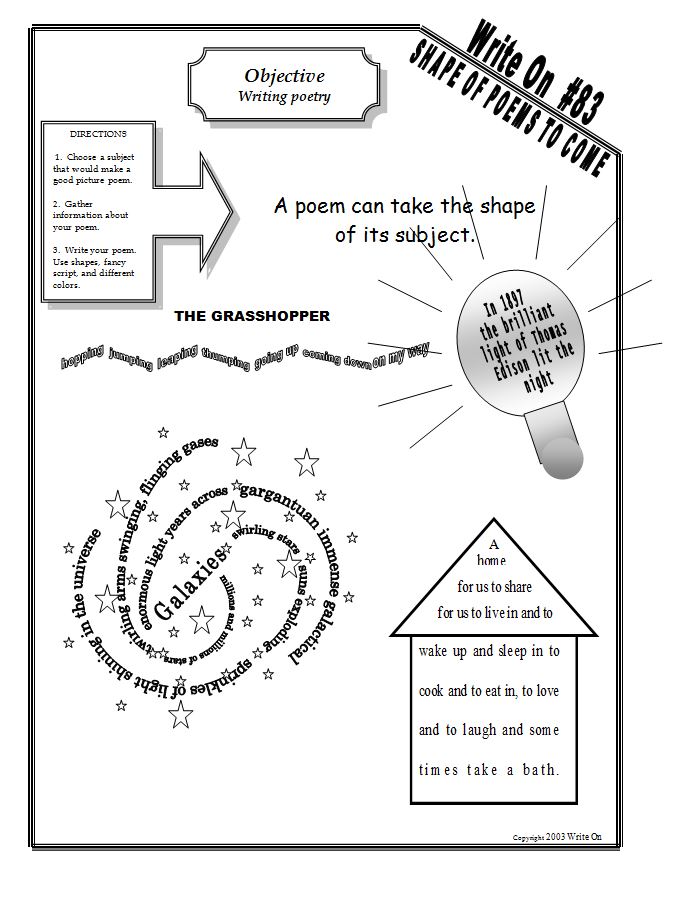
- Descriptive Poems
- Lyrics
- Diametribes
- Epitaphs
- Meter
Essays and Thesis Development
By the end, students will be writing essays with strong thesis development.
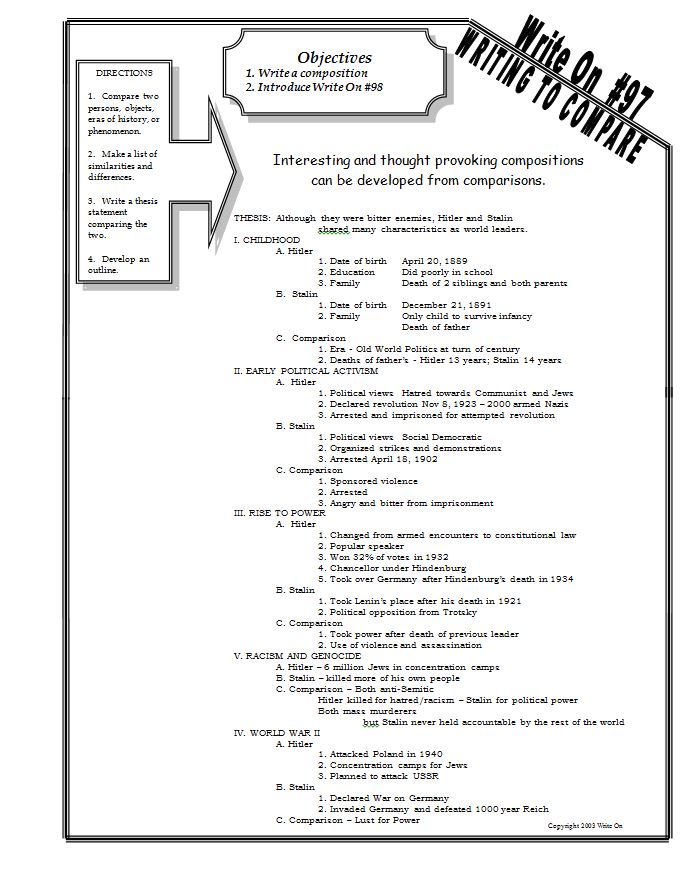
- Writing to Compare and Contrast
- Writing to Defend
- Writing to Persuade
But the process was painless. By starting with sentence development and moving to thesis development with a variety of interesting writing activities, students learned to communicate their own ideas with progressively expanding skills.
19.95
Soft Cover
Our bound edition is an 8 1/2 by 11" soft cover book. 138 pages
Instructor's Guide included.
Non-consumable. Shipped to your home.
17.95
Printable Download
In a hurry? Order the e-book download and print today.
Read More
Return to read more about Write On: The Homeschool Writing Curriculum Kids Love.About Our Site
Hands-On Learning












